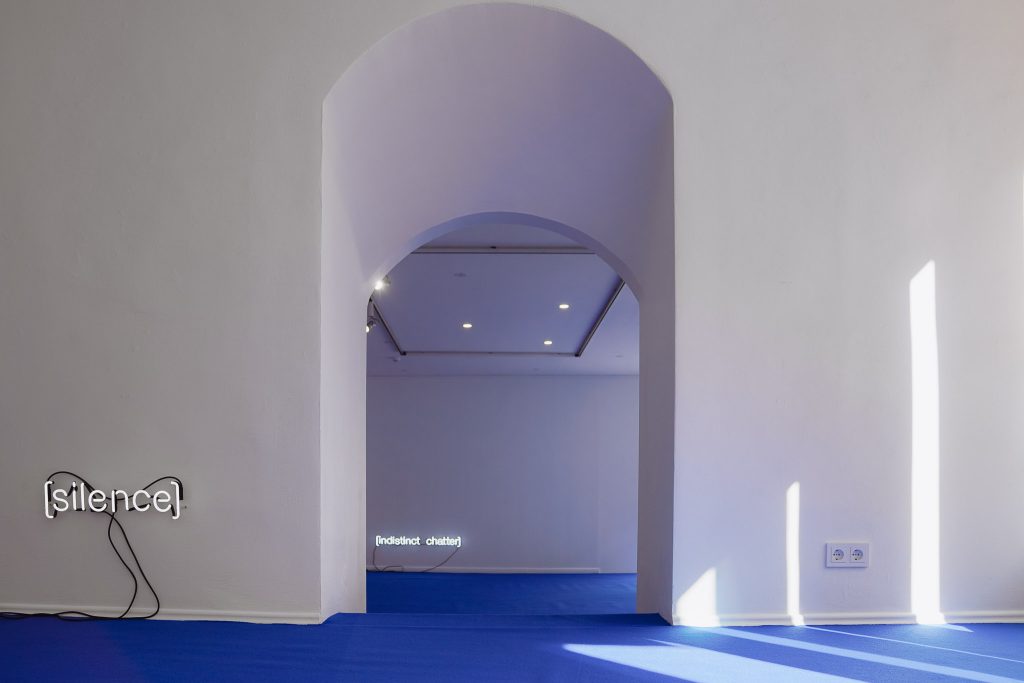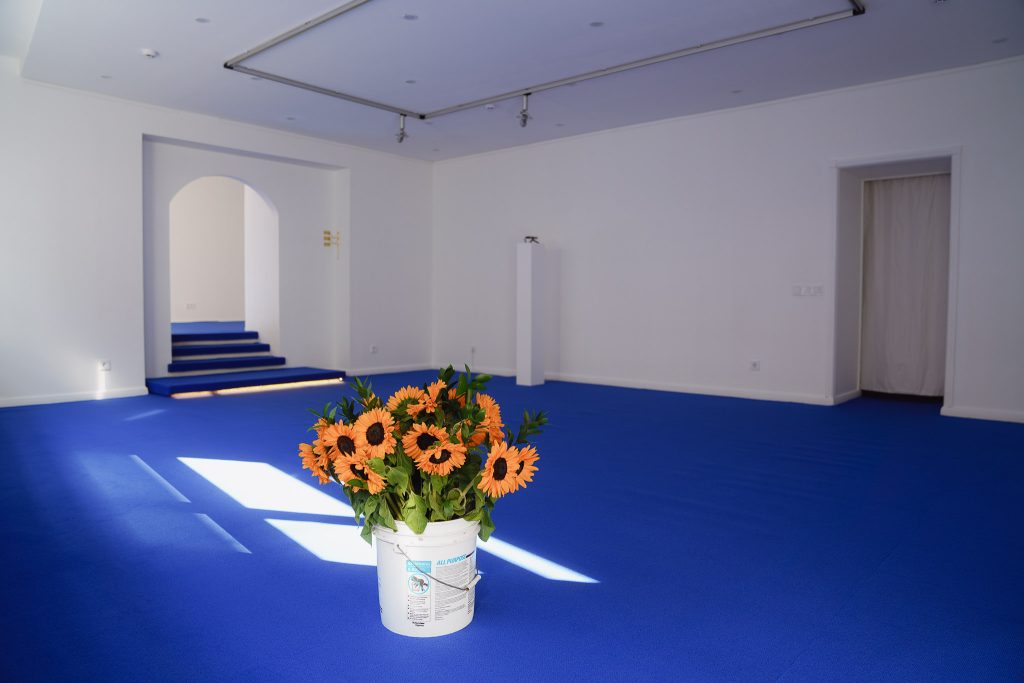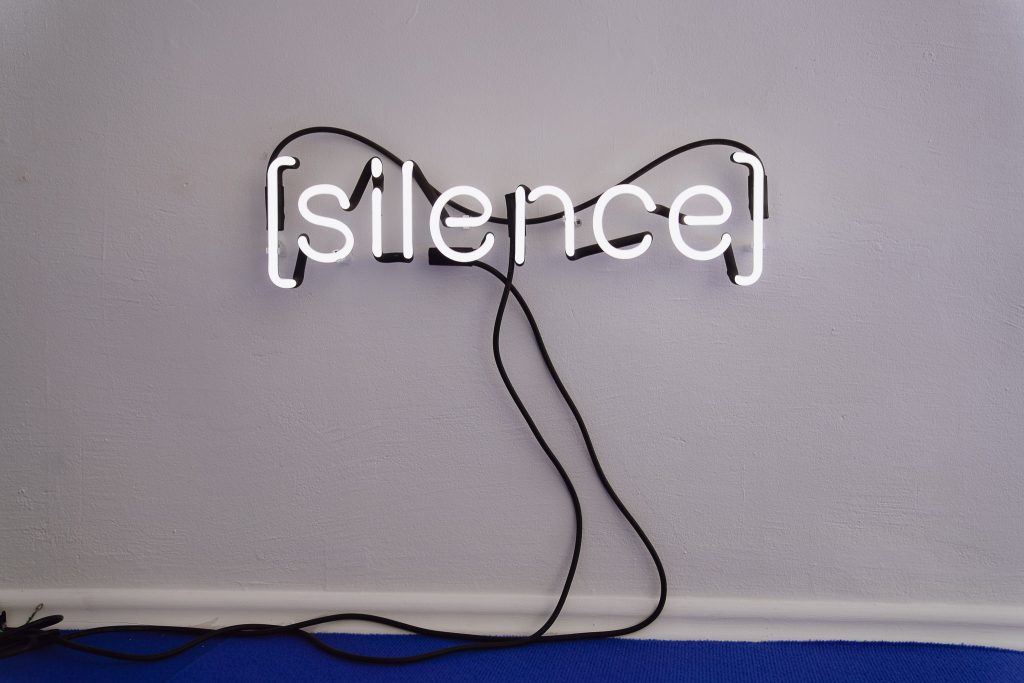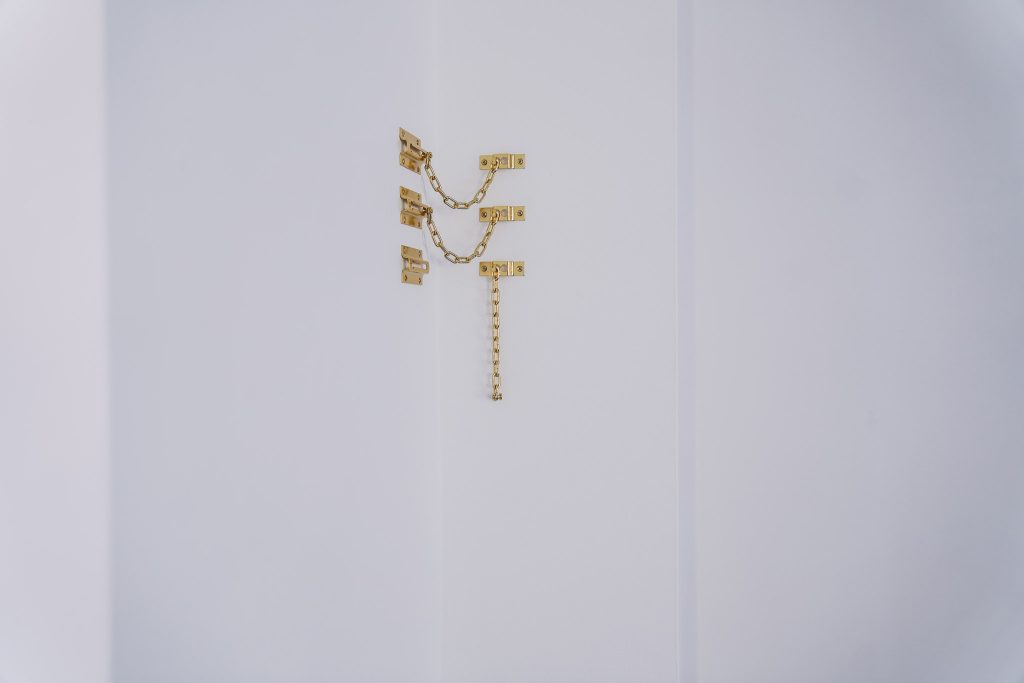Author Valdas Puteikis
Jurgis Tarabilda’s exhibition The Sun Entering the Room, this time curated by art critic Vytenis Burokas, is the artist’s fifth solo exhibition at the Meno Niša gallery. His courage to responsibly and sensitively try out almost all genres of art – from painting to installations – testifies to the wide but also aesthetically strong range of his ideas.
Recently, in the art world, the ideas behind works of art have been increasingly explained through the phenomenon of memory and experiences gained over time.
For me, the phenomenon of memory is significant as a way or a means of capturing lived moments. Sometimes a very small nuance, a sudden flash of memory, can be the greatest inspiration for the imagination. In an information field flooded with images, it is often difficult to catch that highly personalized flash. I marvel at the ability of Vytenis Burokas, the curator of this exhibition, to accumulate experiences and impressions and to relate them to the history and development of art in such a way that not a single detail seems to be missed.
We were preparing for this exhibition together for quite a long time, meeting once a week for three hours to brainstorm ideas. The deeper we got into the idea of a ray or a beam of light coming through the crack in the door, the purer and more minimalist the image of the future exhibition became, and more and more of my works had to be left out. Over time, I have become aware of the very important aesthetic principle of less is more. Sometimes just a few elements are enough to create the emotion and atmosphere of an exhibition.

But isn’t the noise, the overload of images and sounds on social media contrary to the search for purity and transparency?
It’s impossible to distance oneself from that noise, I am a fairly active user of social media myself because I understand and see the importance of social media in sharing my work with the outside world. Sometimes those images or sounds, their compilations, become the source of certain ideas, sometimes the scrolled image emerges from the subconscious after a while in a different form.
I once made a series of photographs where I wanted to capture the light of streetlamps turned on during the day. The idea was inspired by a photo of a streetlamp light at night that I saw on one of the social networks. The object was on the way to my house in Antakalnis, so I noticed the pole in the daytime and saw the light on… I took a picture, completely unaware that it would lead to an exhibition. The idea came later when I saw some fireworks going off in the daytime. Similarly, the idea for cloud photographs in this exhibition was born. Simple, everyday things that are not noticed or appreciated have a lot of mystery to me.

Collecting images on the phone or in the memory allows one to create other images. But at the same time, I’m learning to distance myself from excessive information, to ignore what is not important to me. Sometimes I publicize not only the exhibition itself, but also certain stages of its preparation on social media, and sometimes I don’t. I hesitate to say whether the viewer loses the surprise effect of the exhibition by seeing the works in progress in advance, but one thing is certain: no virtual presentation of art will replace the viewer’s live participation in the exhibition and presence in the exhibition space. The magical curiosity of the “open door” will always remain. This is what happened to me during my visit to the Venice Biennale this year, when, without planning it or knowing it was happening, I found myself in the exhibition of my idol, the American sculptor and video artist Bruce Nauman, at the Punta della Dogana art center. It was not part of the Venice Biennale, it was a separate exhibition that had been running since the spring before last, in the same way that Damien Hirst’s work was once exhibited alongside the Biennale.

You grew up in an environment where there was probably more art being made and more art albums being collected than anything else.
Today, my own collection of albums is quite respectable. I must admit that it doesn’t always serve a direct function, because when we need to find something, the first thing we do is surf the vastness of the Internet. But the pleasure of flipping through and touching paper albums is incomparable. You can never enjoy art as slowly as when you turn page after page. A process akin to visiting galleries or museums. I have maybe three or four albums by the aforementioned Bruce Nauman. I am not saying that I have read each of them from A to Z, but what a strong emotion you get when while sipping your tea, you flip through a few or a dozen pages and put it back on the shelf.
Being the successor of the Tarabilda dynasty of artists is both a certain honorable commitment and a certain opportunity to be free as if you had inherited that freedom. Unfortunately, I did not get to know my great-grandmother Domicelė Tarabildienė, whose illustrated children’s books my parents’ generation grew up with. I was born when Domicelė had already passed into Eternity. Today, my wife Gabija and I live just a few houses away from Domicelė Tarabildienė’s former house, which is marked with a memorial plaque. In my interest in her work, I have discovered many traits that are close to my heart: her willingness to experiment with artistic genres – painting, printmaking, sculpture, and especially photography, where she would make original prints out of the carved negatives of developed photographic film – still impresses me today and testifies that Domicelė was a person of a very modern, avant-garde mindset. I am also characterized by constant experimentation, not limiting myself to, say, painting alone.

No less influential were my grandparents Vija and Rimtas Tarabilda, who visited this exhibition of mine, and who, despite their advanced age, have retained very strong creativity and curiosity. Being with them in the workshop, the smell of paper and graphite, and the sound of a pencil rattling have been forever etched in my memory and constantly evoke fond memories. Like the nature lessons of my dad, Agnius Tarabilda, a graphic designer who now works in book publishing. The sensitivity to the environment, to every creature, when my dad took these photographs, will also last a lifetime.
The “dash” works exhibited four years ago at Meno Niša (exhibition The Reality Show) portray you as an artist who strives for minimalism with maximum effort.
The so-called dashes require a very high level of concentration and infinite precision during the creative process. To get it right the first time, with a flick of the wrist, requires the utmost patience: you have to repeat it dozens of times before you get the intensity of the color and the depth of the shadow right. Many people say that a person becomes more patient as they mature, but I cannot say that about myself, because very often I catch myself losing patience and thoroughness. Curiously, I was most patient and persistent as a child: when I was studying at the National M.K. Čiurlionis School of Art, I was fascinated by realism and I took great pleasure in painting small details. If I had to paint, say, a Baroque chandelier today, I would probably go crazy with the amount of detail.

When someone compares my work to something that “a child could do”, I take it as the highest compliment. Or the chains on the wall that hold the door (an element of this exhibition): many people think, what is the big deal with this simple household item? Taken individually, each object may be worthless, but it is the totality of these objects that creates the mood. How many thoughts must go around in the mind for that object to orbit the whole exhibition and, together with the other objects and the natural light streaming through the gallery window, create the atmosphere, is a matter of work, waiting, and letting the idea mature. Today I’m going through a period where I want my work to speak in a cozy and sensitive, maybe even intimate way, without going into the global problems of the world. I’ve noticed that for some time now, maybe for a few years already, I’ve been choosing the color blue more and more often, very unconsciously, intuitively. It has stalked me at the ArtVilnius International Art Fair, it accompanied me to Riga, where at the gallery Look! monochrome works were illuminated by blue neon at night.

The exhibition The Sun Entering the Room, with a dancing sunbeam crawling on the walls, is a poetic farewell to summer, evoking a longing for autumn’s long shadows.
All interpretations are correct. And the more of them, the more important the work of art. For curator Vytenis Burokas, the electricity switch seems to be a tool to make sure that we are not dreaming, while for others it might be associated with the social problem of increased electricity prices. The “dash” series was probably the most commercially successful of my career: as soon as I uploaded the work to social media, it disappeared from the gallery. However, I reached a point where I was no longer getting the maximum satisfaction from that successful series, so I stepped out of my comfort zone and chose a much more challenging, more personal, more life-experience-requiring, and, of course, more sensitive theme for the exhibition – as if I were opening the door of my house and waiting for the light to come in.
Photos by Rytis Šeškaitis
